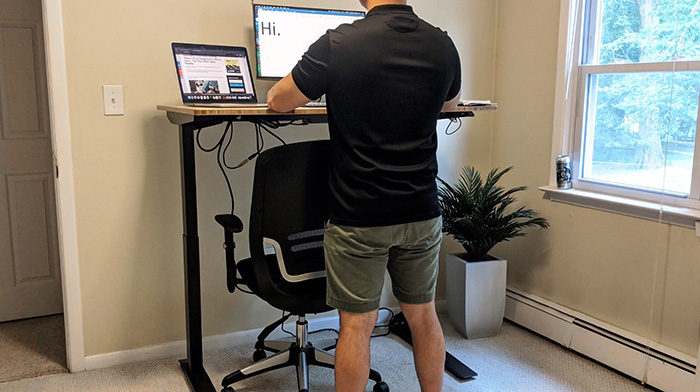Standing desks have garnered significant attention over the past few years, becoming a staple in modern workplaces and home offices. But the question remains: Are standing desks an ergonomic miracle or just another passing fad? Let’s delve into the benefits, drawbacks, and overall impact of standing desks to determine their true value.

The Benefits of Standing Desks
1. Health Advantages
-
Reduced Risk of Chronic Diseases: Prolonged sitting is linked to various health issues, including obesity, diabetes, cardiovascular diseases, and certain cancers. Standing desks encourage users to move more, which can help mitigate these risks.
-
Improved Posture and Reduced Back Pain: Standing desks promote better posture by allowing users to alternate between sitting and standing, reducing the strain on the lower back and spine.
-
Increased Energy and Mood: Standing more during the day has been associated with increased energy levels and improved mood, potentially leading to a more productive and positive workday.
2. Productivity Boost
-
Enhanced Focus and Cognitive Function: Some studies suggest that standing desks can improve concentration and cognitive function, leading to increased productivity.
-
Flexibility and Movement: The ability to switch between sitting and standing encourages movement, which can break the monotony of a sedentary work routine and keep the mind refreshed.
3. Ergonomic Benefits
-
Customization: Many standing desks are adjustable, allowing users to find the perfect height for both sitting and standing positions. This personalization supports better ergonomic practices.
-
Versatility: Standing desks can be used in various settings, from traditional offices to home workspaces, and can be easily integrated into existing setups with minimal disruption.
The Drawbacks of Standing Desks
1. Potential for Overuse
-
Standing Too Long: While standing desks offer health benefits, standing for prolonged periods can lead to discomfort and issues such as leg pain and varicose veins. It’s important to balance standing with sitting and moving around.
-
Initial Adjustment Period: Transitioning to a standing desk can require an adjustment period. Users may experience fatigue and discomfort initially as their bodies adapt to the new working posture.
2. Cost and Accessibility
-
Expense: High-quality standing desks can be expensive, which may be a barrier for some individuals and smaller businesses.
-
Space Requirements: Standing desks may require more space than traditional desks, which can be a constraint in smaller work environments.
3. Mixed Research Results
-
Varied Study Outcomes: While many studies highlight the benefits of standing desks, others show mixed results regarding their impact on health and productivity. This variation can make it challenging to draw definitive conclusions about their effectiveness.
The Verdict: Miracle or Fad?
Standing desks are not merely a passing fad; they represent a significant shift towards healthier work environments. However, their benefits are maximized when used correctly as part of a balanced approach to work ergonomics. Here are some key takeaways:
-
Moderation is Key: Alternating between sitting, standing, and moving is crucial to reap the full benefits of standing desks. The 20-8-2 rule (20 minutes sitting, 8 minutes standing, and 2 minutes moving every half hour) is a practical guideline.
-
Personalization: Adjustable standing desks that cater to individual needs and preferences are more likely to provide ergonomic benefits.
-
Complementary Practices: Standing desks should be part of a broader strategy that includes regular breaks, ergonomic office setups, and overall wellness practices such as exercise and proper nutrition.
Conclusion
Standing desks offer considerable benefits for health and productivity, making them a valuable addition to modern workspaces. While they are not a one-size-fits-all solution and should be used mindfully, their growing popularity and positive impact suggest that they are more than just a fleeting trend. By integrating standing desks thoughtfully into daily routines, individuals and organizations can create healthier, more dynamic work environments.
